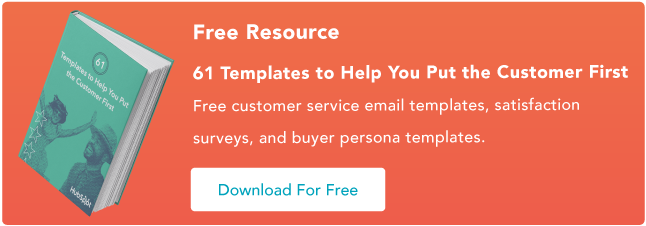在理想的世界中,我们将始终知道如何以及何时吸引客户。我们可以有一个与他们互动,转换它们并继续使他们感到高兴的渠道。当我们在此单个渠道中创造理想的客户体验时,我们的所有营销,销售和服务工作都可以轻松地进行跟踪和增强。
不幸的是,理想情况很少适用于企业。正如任何曾经试图遇到潜在客户或客户配额的人都可以证明的那样,如果您只在一个频道上推销,您将错过大部分目标受众。实际上,专注于单个渠道甚至可以使客户体验差,并阻止您成功培养潜在客户。
给您的听众留下积极的印象,需要在他们所处的位置见到他们,在需要时给予他们所需的关注和内容。这就是跨渠道营销的来源。它为您的客户提供了一种强大的,相互联系的方法。但是,在跨渠道营销中取得成功不仅需要在各种营销渠道上发布内容。做得很好,需要无缝将您的内容融合在一起并创造统一的体验。
这就是您的方式。
What is cross-channel marketing?
Cross-channel marketing is about blending together your various marketing channels in a way that creates a logical progression for your target audience to progress from one stage to the next. Your various channels need to work together and provide context for the messages your persona receives as they go from one channel to another. It's important not to confuse cross-channel marketing with omni-channel marketing. Omni-channel marketing, like cross-channel marketing, utilizes several marketing channels to interact with customers, but these marketing efforts typically lack unity.
In omni-channel marketing, you may send your customers an email about an upcoming deal, run some targeted ads on social media to improve your brand recognition, and publish blog posts about the topics most relevant to your business. Each of these is an effective method for nurturing leads, but in multi-channel marketing, they're treated as independent entities. Your emails have their own goals and topics, as do your social media ads and your blog posts. As a result, your marketing efforts essentially operate independently, making it difficult to tie any particular effort back to ROI.
With cross-channel marketing, you're bringing each of these venues into unison with each other so that they build off of each other and amplify their impact. For example, if a lead reads a blog post you wrote about the pitfalls of an issue that your business solves, the marketing email they later receive might provide a customer testimonial from someone who overcame that same issue using your product. Then, when the lead gets on social media later that evening, they'll see an advertisement about with a catchy headline about how your products or services completely remove the issue they were initially reading about.
Rather than presenting potential customers with fragmented messages about all the great things you can do, the products you offer, or the deals that you're running, they're getting the content that is most relevant to their needs across a variety of channels. This gives you a clear brand impression for that lead, and it makes their experience with you as seamless and direct as possible. Additionally, because there's clear interconnectedness between each portion of the marketing experience, it's easier to view your marketing efforts in a cumulative way, which can help you to more clearly calculate and understand marketing ROI.
为什么要使用跨渠道营销?
Regardless of the industry that you're in, the key to an effective marketing strategy is tounderstand your target persona.如果您对自己的营销没有透彻的了解,就无法有效营销。否则,您只是将营销工作分散到风中,并希望某些东西能正确地降落。
In the digital age, when consumers are constantly being bombarded and interrupted by brands that are competing for their attention, understanding your target persona requires understanding how they interact with brands and make buying decisions. It requires being in touch with where they're getting the information to make these decisions (i.e. what channels they're on), as well as how they want to receive this information (i.e. what distinguishes you from the ads that they actively ignore).
Cross-channel marketing works to solve this issue by meeting your customers where they're at and in a format that's not likely to be overlooked. By doing so, you're going to be:
- Increasing engagement with your content by personalizing each touch point to cater to your individual leads
- 提高客户忠诚度
- Making it easier to contextualize individual channel metrics within overall ROI
1.增加参与度
With the sheer volume of ads that consumers see in a day, many have gone "ad-blind," and scroll past your PPC ads, boosted posts, and marketing emails without giving them a thought. Think about your own experiences as a consumer. Many of us open our email in the morning and bulk delete the generic marketing emails that clutter our inboxes without even reading the entire subject line.
If I've been working on figuring out a complex issue for my team, however, and have already come across a brand that I view as an authority on that issue, receiving a marketing email or seeing an ad about that topic is going to be more likely to catch my attention and not get deleted in my daily inbox cleaning efforts.
Consumers respond positively topersonalized content.For example, calls to action that contain personalized contentperform 202% betterthan generic CTAs. Additionally, marketing campaigns that lack content relevancy have an83% lower response rate比迎合目标的竞选活动。
2. Greater Customer Loyalty
This leads to an improved brand experience as a consumer, which increases a buyer's sense of delight. As any marketer knows, a delighted customer is a loyal customer, and combining loyalty with delight is the recipe for creating your most powerful marketing tool: a brand ambassador.
Consumers generally want to have a reason to keep coming back. It's easier to know that you have a go-to resource for a given type of issue or need than to have to go through the process of researching, comparing, and testing solutions. For many buyers, it's simply more convenient to upgrade or purchase additional services from a provider they already know and trust, even if it's slightly more costly, than to find someone brand new who can do the same thing. When a customer trusts you and you genuinely want to help them succeed -- and your unified marketing and customer service efforts demonstrate that– you remain front of mind as an authority.
3. Proven ROI
Combining your efforts with a cross-channel marketing approach will help to break down silos that decontextualize metrics and don't always accurately represent the success of your marketing campaigns. For example, if you look at your marketing efforts from a single-channel or multi-channel approach, your email marketing team may be focused on getting opens or CTA impressions. Meanwhile, your social media team is focused on getting impressions or likes. Finally, your content team is looking at blog views.
当产生潜在客户或进行销售时,这些渠道中的每一个都希望为之赢得信誉,并将他们自己的指标以证明他们在获胜方面的影响。通过跨渠道整合这些努力,您可以清楚地绘制出各种触摸点,以了解观众如何成为铅,以及线索如何成为客户并将每个频道正在做的工作进行背景化。这不仅创建了更清晰的路线图来完善您的营销工作,而且还有助于避免陷入虚荣指标的陷阱。
如何开始跨通道营销
When getting started with cross-channel marketing, it's important to keep in mind that you'll likely need to tweak your approach and make ongoing optimizations as you get better at cross-channel marketing. The more data you collect, the better you'll understand your customers' cross-channel buying experience, which will give you insights into improvements you can make across each channel.
1. Unify your data.
If you haven't already clearly defined your customer persona, do so before diving into cross-channel marketing. Having a clear concept of your buyer's persona is the starting point for any marketing effort.
Assuming you've already developed your persona, the first step and backbone of any successful cross-channel strategy is having unified data within a customer data platform (CDP). Oftentimes, your business' customer relationship management (CRM) platform will be able to manage this data, so you can likely get started by building off of the tools that you already have. Regardless of the specific CDP that you go with, you'll want to make sure that you have the analytics data available to capture each of your leads' touch points.
Typically, this will involve using tracking URLs or browser cookies to associate online actions with an individual lead's contact profile. You'll want to be able to see which emails they've been sent and have interacted with, which social media campaigns have made an impression on them, the blog posts that they've read, PPC campaigns they've clicked on, and conversations that your sales or service team have had with that customer. Whatever channels you have used for marketing– or that you will use– need to be reflected within your CDP.
2. Clarify your customer segments.
Ideally, your CDP will be able to create meaningful reports across customers that help you to visualize and understand this data. But, even if you have to do some number crunching by hand, your second step to getting started with cross-channel marketing is to understand the varying segments within your customer persona.
看在the data related to your touch points to see if there are any clear successes, failures, or trends that you can identify. For example, you'll likely notice that most of your leads who have already converted into customers have something in common, whether that's a minimum number of interactions before converting, average time spent interacting with your marketing efforts before converting, or even specific campaigns with high conversion rates.
By analyzing your customer data and creating a clear mental picture of the segments within your contact database you'll be able to determine which channels to prioritize and the type of content that performs best for your business across each channel.
Moving forward, it's also important to document and contextualize each interaction so that you can successfully cater your content to your customers.
3.使用智能内容统一您的互动。
If your CDP is integrated with your content management system (CMS), this step will likely be a bit easier than if they're operating independently of each other. Even if they aren't integrated, you can still be successful with cross-channel marketing; it may just require more hands-on work to personalize your content.
随着客户的分析并根据他们的互动进行细分,您的下一步就是开始自定义内容的过程,以便符合每个观看者的需求。
The most direct way of accomplishing this is toutilize smart content. Smart content is dynamic content that is determined by a certain set of criteria. To put it simply, smart content says "if a viewer has done this, show them that." This is why it's necessary to have all of your customer interaction data unified within your CDP. You'll be able to clearly identify who has done what, so your subsequent interactions will be built upon established touch points.
如果您的CMS能够使用智能内容,创建内容或至少内容的内容,则基于您将联系人打破的分段列表。例如,假设您正在发布有关您的核心服务之一的博客文章。您可以为各个细分市场自定义此博客文章,以便您认为您认为是最热烈的潜在客户的客户将看到CTA与销售联系以开始。如果您知道另一个客户已经查看了您的定价页面,那么也许此CTA会向他们提出要索取10%折扣的要约。对于没有很多互动的联系人,或者这是他们的第一个互动,本节可以用有关同一主题的建议内容代替。
不管这些读者在布鲁里溃疡yer's journey, you're showing them the content that's most relevant to where they're at. If your CMS isn't integrated with your CDP or CRM, you'll want to leverage other means of communication to manually cater your content to your viewers' individual needs. For example, if you've been able to identify three distinct variations of one of your personas, put that information to good use and create three variations of your next newsletter so that each segment gets the most relevant content. Additionally, you can use this knowledge to createcustom audiences for targeted advertisingon social media.
4. Optimize and repeat.
跨渠道营销的最大优势之一是,您可以报告并分析一个渠道的营销策略影响另一个渠道的方式。简单地拥有这些数据就足以使您对ROI有价值的见解。但是,如果您希望跨渠道营销提高生产力,也可以分析此信息,以寻找对跨渠道营销方法进行持续优化的方法。
利用这些数据来提高您的优势并运行实验,例如电子邮件中的A/B测试,调整目标受众的Facebook广告的特征,或者将呼吁行动的放置以继续发掘出新的和有价值的见解顾客。当您准备实施其他跨渠道营销活动时,您将能够通过已经收集的数据来丰富每个步骤。
How Will You Grow with Cross-Channel Marketing?
By leveraging cross-channel marketing, not only will your team be able to execute powerful marketing strategies, but by unifying your data within a customer data platform, you'll also have more meaningful insights into your customer's behavior. That knowledge means that you'll greater opportunities to cater your sales, marketing, and customer service interactions to each and every one of your contacts. When you can access that information, you're on track to delight your customers at every turn. From there, you can grow wherever you want to.
To learn more, read everything you need to know about数据管理平台.
Originally published Dec 14, 2018 8:00:00 AM, updated June 09 2021
Don't forget to share this post!
相关文章



扩展优惠
Customer Service Metrics Calculator
Get it now
![→ Free Download: 61 Templates to Help You Put the Customer First [Download Now]](https://no-cache.hubspot.com/cta/default/53/a66c79d4-2a39-46e6-a80a-f7b999133c06.png)

